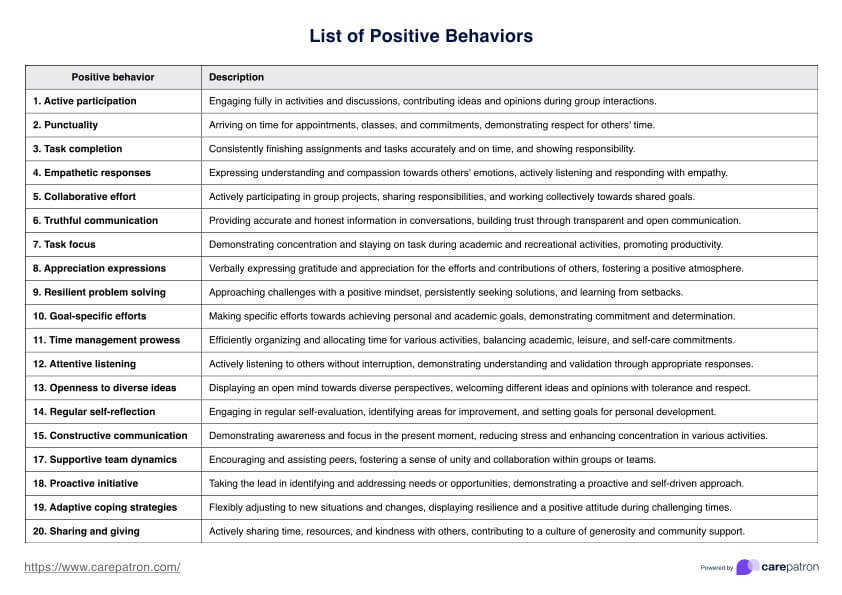Anyone, from kids to adults, seeking to foster positivity and cultivate a more fulfilling and harmonious life.

List of Positive Behaviors
Use our List of Positive Behaviors to give clients ideas on the best positive behaviors they should develop over time!
Use Template
List of Positive Behaviors Template
Commonly asked questions
Incorporating the list into one's daily routine is ideal for infusing positivity into various aspects of life and impacting one's well-being.
Clients can embrace the list by selecting specific positive behaviors, incorporating them into daily actions, and watching as they transform their attitudes and interactions, making every day more uplifting and positive!
EHR and practice management software
Get started for free
*No credit card required
Free
$0/usd
Unlimited clients
Telehealth
1GB of storage
Client portal text
Automated billing and online payments











